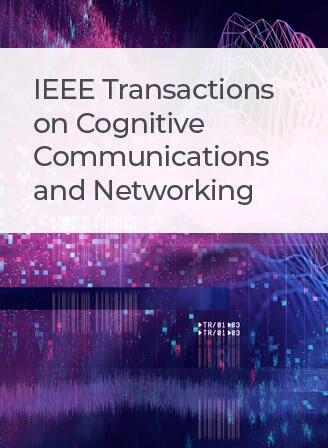在支持边缘的 Metaverse 中实现弹性、安全和私有矩阵向量乘法的编码分布式计算
IF 7.4
1区 计算机科学
Q1 TELECOMMUNICATIONS
IEEE Transactions on Cognitive Communications and Networking
Pub Date : 2024-04-19
DOI:10.1109/TCCN.2024.3391317
引用次数: 0
摘要
Metaverse 是一个身临其境、逼真的共享虚拟世界,需要高效地渲染和处理数以百万计的虚拟对象和场景。这就要求计算时间敏感和计算密集型任务,主要集中在矩阵乘法。云计算可用于处理计算密集型任务。然而,由于服务器位于远程,云计算无法满足沉浸式体验的超低延迟要求。在本文中,我们提出了一种有效的分布式边缘计算框架,用于计算 Metaverse 的高维矩阵乘法。通过分布式边缘计算,高维矩阵乘法任务被分成多个较小的子任务,然后分配给附近的边缘服务器(工作者)。然而,由于存在散兵游勇、恶意和串通的服务器,利用分布式边缘服务器会产生新的问题,从而限制了分布式边缘计算在 Metaverse 系统中的应用。因此,我们设计了一种弹性、安全和私有编码分布式计算(RSPCDC)方案来共同解决上述问题。首先,RSPCDC 方案通过降低恢复阈值来减少整体计算延迟。其次,为识别恶意(如拜占庭)工作者,该方案中嵌入了一种验证方法,可在不需要额外工作者的情况下及时发现拜占庭攻击。第三,RSPCDC 方案为输入数据提供了(信息论)隐私保护,防止工作人员串通。第四,在恢复最终结果的过程中,可以充分利用散兵计算的子任务结果来提高计算性能。此外,RSPCDC 方案被设计并部署在工人计算资源异构的实际场景中。通过广泛的性能评估,证明了与现有方案相比,所提出的 RSPCDC 方案的改进和有效性。本文章由计算机程序翻译,如有差异,请以英文原文为准。
Coded Distributed Computing for Resilient, Secure and Private Matrix-Vector Multiplication in Edge-Enabled Metaverse
Metaverse is an immersive and photorealistic shared virtual world that requires efficient rendering and processing of millions of virtual objects and scenes. This leads to the requirements of computing time-sensitive and computation-intensive tasks, primarily focused on matrix multiplication. Cloud computing can be leveraged to process computation-intensive tasks. However, it is not able to meet the ultra-low latency requirements of immersive experiences due to the remote servers. In this paper, we propose an effectively distributed edge computing framework to compute high-dimensional matrix multiplication for the Metaverse. With the distributed edge computing, the high-dimensional matrix multiplication task is divided into multiple smaller subtasks, which are then assigned to nearby edge servers (workers). However, leveraging distributed edge servers raises emerging issues due to the existence of stragglers, malicious, and colluding servers, which limits the applications of distributed edge computing in the Metaverse system. Thus, we design a resilient, secure, and private coded distributed computing (RSPCDC) scheme to jointly address the aforementioned issues. Firstly, the RSPCDC scheme reduces overall computation latency by lowering the recovery threshold. Secondly, to identify malicious (e.g., Byzantine) workers, a verification approach is embedded in the scheme to promptly detect the Byzantine attack without requiring additional workers. Thirdly, the RSPCDC scheme provides (information-theoretic) privacy protection for the input data against the collusion of workers. Fourthly, the results of subtasks computed by stragglers are fully utilized to enhance the computation performance during the recovery of the final result. In addition, the RSPCDC scheme is designed and deployed in practical scenarios in which the computing resources of the workers are heterogeneous. Extensive performance evaluations are provided to demonstrate the improvement and effectiveness of the proposed RSPCDC scheme in comparison to existing schemes.
求助全文
通过发布文献求助,成功后即可免费获取论文全文。
去求助
来源期刊

IEEE Transactions on Cognitive Communications and Networking
Computer Science-Artificial Intelligence
CiteScore
15.50
自引率
7.00%
发文量
108
期刊介绍:
The IEEE Transactions on Cognitive Communications and Networking (TCCN) aims to publish high-quality manuscripts that push the boundaries of cognitive communications and networking research. Cognitive, in this context, refers to the application of perception, learning, reasoning, memory, and adaptive approaches in communication system design. The transactions welcome submissions that explore various aspects of cognitive communications and networks, focusing on innovative and holistic approaches to complex system design. Key topics covered include architecture, protocols, cross-layer design, and cognition cycle design for cognitive networks. Additionally, research on machine learning, artificial intelligence, end-to-end and distributed intelligence, software-defined networking, cognitive radios, spectrum sharing, and security and privacy issues in cognitive networks are of interest. The publication also encourages papers addressing novel services and applications enabled by these cognitive concepts.
 求助内容:
求助内容: 应助结果提醒方式:
应助结果提醒方式:


